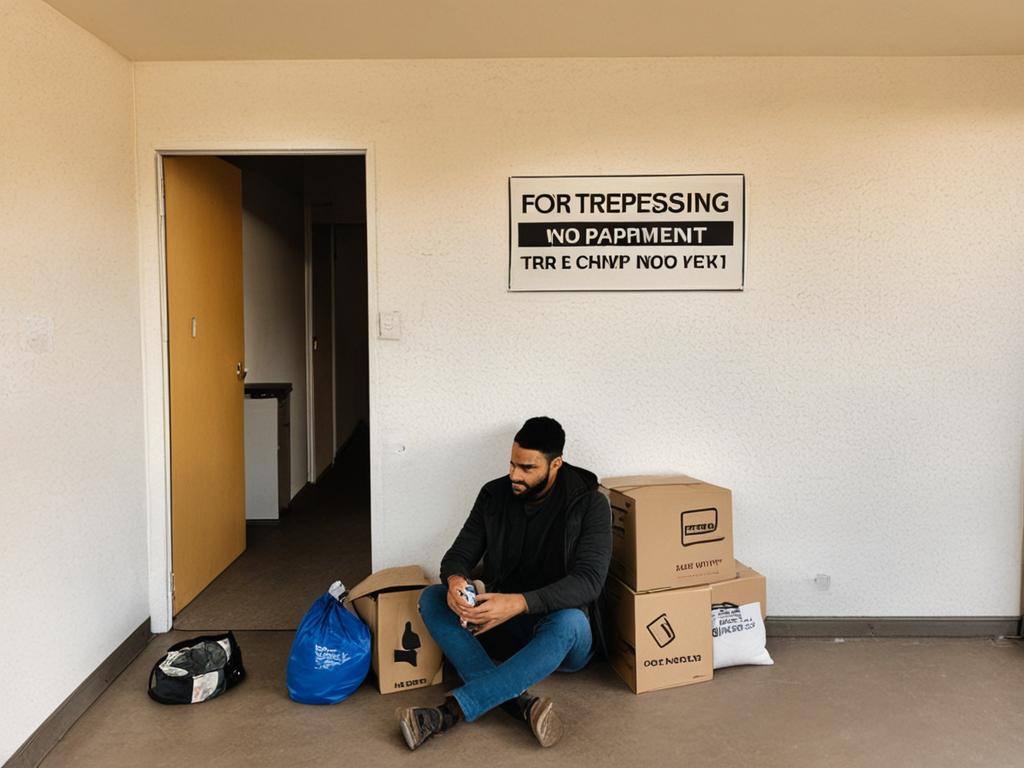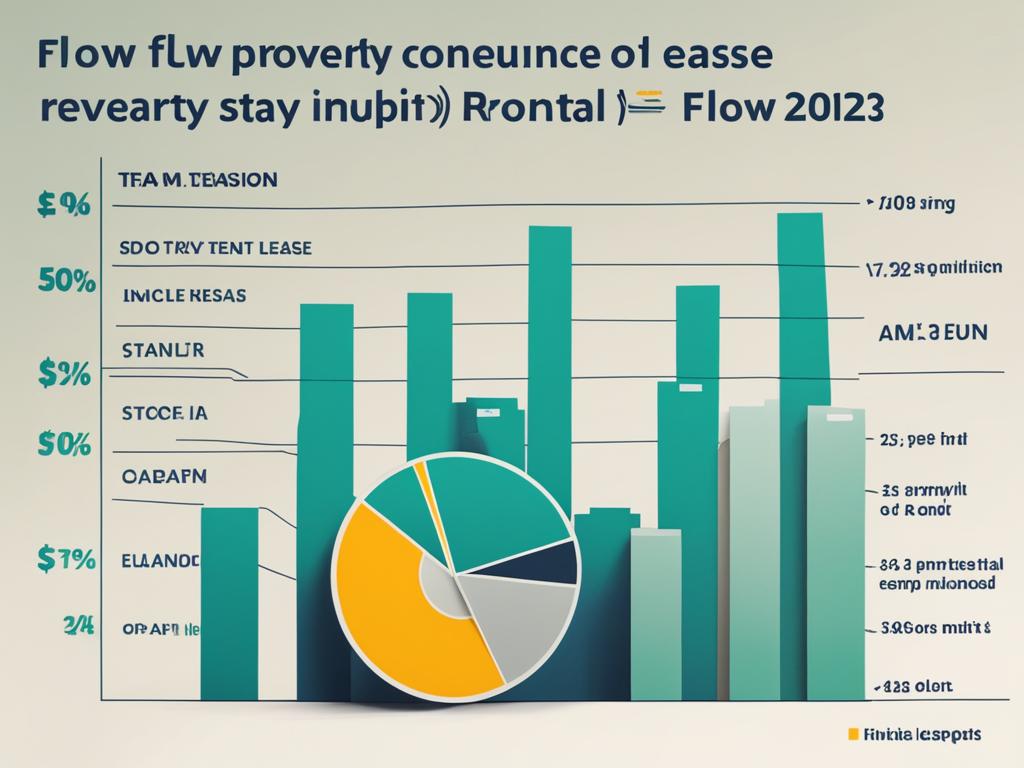Tenant Overstay: What Happens Post-Lease Expiry?
As a lease reaches its end date, landlords and tenants alike may find themselves navigating the murky waters of post-lease residency. Understanding tenant rights after lease expiration, the typical post-lease tenancy duration, and the conditions under which a legal stay for tenants after lease ends is permissible, becomes essential to maintaining harmonious and law-abiding rental relationships. Whether you are a landlord or tenant, being informed about the nuances of lease terminations can spare both parties from potential legal disputes and financial loss.
Key Takeaways
- Tenant overstays can evolve into a variety of tenancy types based on landlord actions.
- Local laws and ordinances dictate specific tenant rights once a lease has expired.
- Holdover tenancy may imply legal stays through implied agreements, even post-lease.
- Formal notices are typically required for the termination of overstay situations.
- Landlord acceptance of rent after lease expiration can inadvertently create new tenancy terms.
- Understanding tenant rights and local regulations is crucial to resolving post-lease occupancy.
Understanding Tenant Overstay Post-Lease
When tenants continue to reside in a property after the expiration of their lease, the scenario is known as a tenant overstay. This period, known as the duration of tenant’s occupancy after lease termination, presents a unique set of challenges for landlords including risks to rental income and property maintenance. Understanding the scope of tenant’s rights to remain after lease ends is essential for property owners to manage these situations effectively and within legal bounds.
Tenant lease expiration and stay duration can vary depending on whether the landlord takes steps to renew the lease, establish a new tenancy type, or initiate eviction processes. State regulations and court rulings play pivotal roles in determining the extent to which a tenant can legally occupy a residence post-lease.
State law often classifies post-lease occupancy into tenancy at will, periodic tenancy, or tenancy at sufferance, setting the framework within which both landlords and tenants must operate.
Considering that each of these tenancies has different legal bearings and implications, landlords are encouraged to familiarize themselves with local statutes to navigate potential overstay issues with confidence and legality. The table below outlines the key features of these tenancy arrangements to provide clarity on what landlords can expect in terms of occupancy and tenancy rights.
| Type of Tenancy | Description | Landlord Actions |
|---|---|---|
| Tenancy at Will | Occurs when a tenant remains with the landlord’s consent, post-lease, without a fixed end date. | Either party can terminate with proper notice, as stipulated by local laws. |
| Periodic Tenancy | A lease continuation based on rental payments made at regular intervals with no set termination date. | Landlord must issue a termination notice matching the rental payment period (e.g., one month for monthly payments). |
| Tenancy at Sufferance | Exists when a tenant stays without explicit permission after lease expiration, until the landlord takes legal action. | Landlord may pursue eviction but must provide formal notice, even with tenant’s lack of legal claim to the property. |
The complexity of handling tenancy post-lease necessitates well-informed decision-making to protect the interests of property owners while respecting the rights of tenants. Ascertain legal requirements, provide clear communication, and document all interactions to prevent disputes and maintain a healthy landlord-tenant relationship.
Legal Implications of Holdover Tenancy
When the final page of a lease is turned, the story between a landlord and tenant can take several divergent paths. Navigating the legal landscape of post-lease tenure can be complex, with each type of holdover tenancy presenting unique challenges and repercussions. It’s pivotal for both landlords and tenants to comprehend the legal implications of holdover tenancy and the potential for tenant holdover eviction, a scenario which can disrupt rental cash flow and occupancy.
Tenancy at Will Explained
A tenancy at will may commence following the expiration of a formal lease, provided the landlord permits the tenant to continue their occupancy without entering into a new lease agreement. This practical arrangement allows for a measure of flexibility; however, either party can terminate such an informal agreement, subject to state-specific landlord-tenant laws.
Examining Periodic Tenancy Regulations
A periodic tenancy is a scenario wherein the tenant remits payment at regular intervals—without a fixed-term lease—thus establishing an ongoing tenancy arrangement. It persists until either the landlord or tenant signifies intent to terminate the tenancy, in accordance with legal prescriptions for notification.
Dealing with Tenancy at Sufferance
The peculiar situation of tenancy at sufferance materializes when a tenant occupies the property without explicit landlord consent post-lease expiry. Even in this tense stalemate, the landlord must provide formal eviction notice. Jurisdictions might differ in their approach, with some offering tenants the ability to extend their stay under prior lease conditions if proper notice hasn’t been dispensed.

Understanding the specifics of tenant holdover eviction is crucial for landlords who may need to reclaim their property. The complexities multiply across jurisdictions, requiring careful consideration of local housing laws. Below is a comparative table that outlines key differences and conditions for terminating different types of holdover tenancy:
| Type of Holdover Tenancy | Termination Requirements | Landlord’s Legal Action | Tenant’s Continuation Rights |
|---|---|---|---|
| Tenancy at Will | Advance notice as per state law | None, until notice given | May continue till notice served |
| Periodic Tenancy | Notice aligning with payment intervals | Potential legal notice for termination | Can remain until termination notice period concludes |
| Tenancy at Sufferance | Immediate notice; eviction proceedings may follow | Must follow formal eviction process | Conditional based on jurisdictional regulations |
The accurate identification of the type of tenancy and adherence to legal directives are central to addressing the consequences of post-lease tenure and preventing tenant holdover eviction disputes. For landlords, a granular understanding of their rights and obligations is just as crucial as it is for tenants to know where they stand when the lease reaches its sunset.
How Long Can a Tenant Stay After the Lease Expires?
One of the most fundamental questions for both landlords and tenants when a lease ends is: how long can a tenant stay after the lease expires? The answer is not always straightforward and hinges on the landlord’s subsequent actions and the state’s legal framework. By understanding the implications of post-lease agreements, parties can better navigate the transition period after a lease expiration.
When a tenant continues to occupy a property after their lease has ended without a formal agreement, the law typically creates an implied month-to-month tenancy if the landlord accepts rent. This holds multiple connotations: the extension of a tenant’s stay and the prerequisites for lease termination.
- Accepted Rental Payment: A landlord’s acceptance of rental payment post-lease expiry generally results in a de facto month-to-month tenancy.
- Termination Notice: To end a month-to-month tenancy, a written notice matching the rent’s period—usually one month in advance—is required by both parties.
- Eviction for Violations: If a tenant fails to pay rent or violates lease terms, landlords possess the right to pursue eviction through legal proceedings, which necessitates following specific judicial processes.
| Condition | Resulting Tenancy | Notice Required |
|---|---|---|
| Lease Expires, Rent Accepted | Month-to-Month | Equal to Payment Period, Usually 1 Month |
| Lease Expires, No Rent Accepted | Tenancy at Sufferance | Immediate Eviction Notice |
| Lease Violations Occur | Grounds for Eviction | Varies Based on Violation & State Law |
The key takeaway for tenancy duration post-lease is the importance of communication and formal agreements. Changes in tenancy type and the need for appropriate notice periods are essential considerations that affect how long a tenant can stay after the lease expires.
Steps to Addressing Tenant Holdover Situations
Addressing tenant overstays is a significant concern for property managers and landlords. When a tenant continues to occupy a unit without a current lease agreement, this is known as a holdover tenancy situation. There are methods to tackle these issues effectively, often revolving around legal processes and clear communication.

One of the first steps in dealing with a holdover tenant is to make a decision on whether to accept or refuse additional rent payments. Accepting payment may inadvertently extend the tenant’s legal right to stay on a month-to-month basis, depending on state laws. Alternatively, refusing payment indicates that the tenancy is not welcome, setting the stage for possible eviction proceedings.
It’s critical for landlords to be aware of and follow specific procedures when evicting holdover tenants. Laws and regulations differ from state to state, making it necessary to understand the exact requirements of legal eviction in your jurisdiction. In certain states, like Illinois, the eviction process is stringent and necessitates judicial intervention. A summary of potential steps is outlined in the table below:
| Action | Purpose | Considerations |
|---|---|---|
| Issuance of Formal Notice | To alert the tenant of the requirement to vacate | Must comply with state-specific notification periods and methods |
| Refusal of Rent | To establish the tenant as a non-paying overstay for legal purposes | Can be risky; requires a clear understanding of local tenancy laws |
| Negotiation | To reach an amicable agreement for the tenant to vacate voluntarily | Can lead to a swift and less adversarial resolution |
| Commence Eviction Proceedings | To forcibly remove the tenant through a court order | Usually the last resort due to time, cost, and potential property damage implications |
Furthermore, when addressing tenant overstays, establishing a dialog with the tenant can sometimes lead to a negotiated settlement. For tenants in financial hardship, proposing a payback plan or a temporary lease might prove beneficial. However, if these efforts fail to produce a solution, landlords must be prepared to initiate formal eviction.
Remember, navigating holdover tenancy situations requires a balance of firm legal actions and an understanding of tenants’ circumstances. Landlords and property managers should always strive to resolve issues with professionalism and legality.
Landlord-Tenant Law: Eviction Process and Procedures
Understanding the eviction process and eviction procedures is essential within landlord-tenant law. Evictions are a crucial legal avenue for landlords when a tenant’s occupancy rights are terminated, with specific processes stipulated by law to ensure fairness and recourse for both parties. In this section, we break down the procedural steps necessary for a properly conducted eviction.
| Step | Action | Objective | Duration |
|---|---|---|---|
| 1 | Serving Notice | To inform the tenant of lease termination and eviction | Varies by state (typically 3-30 days) |
| 2 | Filing a Complaint | To initiate legal proceedings | Depends on court schedule |
| 3 | Court Hearing | To present evidence and determine rights | Typically set within a few weeks |
| 4 | Issuing Eviction Order | Formal notice granting eviction right | Immediate to several days post-hearing |
| 5 | Execution by Sheriff | Enforcement of eviction order | Varies by locality |
Retaining an eviction attorney is recommended to navigate the complexities of this legal terrain, particularly in states like Illinois where regulations are stringent and require in-depth knowledge of litigation procedures. A proper eviction not only adheres to prescriptive steps but also respects the intricacies of landlord-tenant relationships.
- Preparation: Landlords should gather all relevant documentation, including lease agreements, records of payments or communication with the tenant, and evidence supporting the grounds for eviction.
- Compliance: It’s imperative to comply strictly with state laws concerning notice periods, methods of serving notice, and grounds for eviction to avoid any legal backfires that may occur from procedural missteps.
- Professional Assistance: Options such as mediation services or legal counsel can provide guidance, ensuring the process is conducted efficiently and within legal bounds.
In conclusion, the eviction process must be managed with careful adherence to landlord-tenant law and the prescribed eviction procedures to protect the rights of both landlords and tenants. With these measures, an obligatory transition can occur with dignity and lawfulness.
Alternatives to Eviction: Negotiating Tenant Exit Strategies
Evicting a tenant can be a lengthy and costly process for landlords. To circumvent these complications, savvy property owners explore alternatives that can benefit both parties. Strategies like cash for keys negotiation and discussing lease renewal options foster an amicable separation and avoid the legalities of eviction.
Cash for Keys: A Creative Solution?
The cash for keys negotiation is a tactic where a financial offer is extended to the tenant to expedite their departure. This agreement works as an amicable and swift tenant exit strategy. It requires the tenant to vacate the premises, ensuring they leave the property in good condition and return all keys in exchange for an agreed-upon sum of money.
Negotiations typically begin with an offer scaled to a fraction of the monthly rent, forming a basis for the discussions. It’s paramount that both parties understand the terms explicitly, with the tenant relinquishing occupation rights, guaranteeing the completion of their move, and the landlord preparing the property for the next occupant post-agreement.

Proposing Lease Renewal or Extension
When faced with a tenant who has stayed beyond their lease term, proposing a lease renewal or lease extension could be a viable route. This option allows landlords to maintain continuity and occupancy, potentially benefiting both the tenant and the property owner. Modifications to the lease, such as an increase in rent or a change in terms, can be applied to align with current market rates or to reflect any new agreements made between the landlord and tenant.
Landlords should consider this option especially with tenants who have demonstrated reliability and responsibility throughout their tenancy. It can also come as a helpful solution for those facing short-term financial issues, affording them the space to regain stability without the landlord having to endure the vacancy period or seek out new occupants.
Renting to Holdover Tenants: Understanding Their Rights
When a lease comes to an end but a tenant remains, they transition to what is known as a holdover tenant. It’s essential for both landlords and tenants to comprehend the scope and limitations of holdover tenants’ rights. While landlords may harbor concerns about holdover tenancy, it is important to observe the lawful treatment of tenants to maintain a respectful and legal landlord-tenant relationship.
One key aspect of such tenancy is tenancy at sufferance, which effectively starts when a tenant stays past the lease term without clear consent or objection from the landlord. This unique position can persist indefinitely until either party elects to address the situation. Landlords, meanwhile, must uphold certain obligations, such as providing adequate notice before terminating the tenancy, as well as refraining from extrajudicial measures like forced evictions or utility cutoffs. To illustrate this important balance, the following table outlines various critical rights holdover tenants possess:
| Right | Description | Landlord’s Responsibility |
|---|---|---|
| Notice of Termination | Tenants must be formally informed before being asked to vacate. | Provide timely and lawful notices aligned with state regulations. |
| Possession | Occupancy is allowed until formal steps are taken for eviction. | Respect occupancy and due process in initiating eviction procedures. |
| Habitability | The right to a livable, safe, and sanitary dwelling persists. | Continue maintaining property standards as per habitability laws. |
| Non-Retaliation | Protection against retaliatory eviction or rent increase. | Engage in lawful methods to resolve tenancy issues. |
In light of these rights, landlords must take a measured approach when dealing with holdover tenants to avoid violating regulations that can result in legal repercussions.

Managing post-lease tenancy requires patience and a solid grasp of landlord-tenant law. By understanding holdover tenants’ rights, landlords can confidently navigate the complexities of tenancy continuation and termination—ensuring legal compliance, and fostering a professional and lawful relationship with their tenants.
Preventative Measures: Avoiding Post-Lease Overstay Complications

For landlords, avoiding tenant overstay and efficiently managing the transition period during lease expiration are pivotal to maintaining the integrity of rental agreements and property use. By instituting strategic lease expiration management tactics, property owners can safeguard against the complexities and legal entanglements that come with holdover tenants. Below are practical steps that landlords can implement to prevent such situations:
- Early Communication: Initiate discussion with tenants regarding lease-ends and move-out expectations well in advance of the expiration date.
- Clear Lease Agreements: Ensure all leases clearly define terms related to expiration and the consequences of overstaying, to minimize misunderstandings.
- Move-Out Instructions: Provide tenants with a detailed checklist of move-out protocols to follow, which can help avoid any ambiguity about their responsibilities.
- Rental Payment Policies: Post-lease payments should be carefully considered. If a new lease is not in place, accepting rent can inadvertently extend occupancy rights.
- Incentives for On-Time Departure: Offer positive reinforcement, such as a returning a portion of the security deposit promptly if the property is left in good condition.
By implementing these proactive measures, landlords can significantly reduce the likelihood of post-lease overstay complications. It is essential to understand both the landlord’s and the tenant’s rights and to operate within legal parameters to maintain a professional and respectful landlord-tenant relationship.
Financial Impact of Holdover Tenancies on Property Management
Holdover tenancies present significant challenges to property management, creating variances in expected rental cash flow and impacting overall financial stability. When a tenant remains in a property without a formal agreement post-lease, property managers must navigate a complex situation that risks fiscal consequences and potential legal complexities. Emergent issues can include rental income loss due to extended vacancy periods, unforeseen expenditures for property repairs, and a hindrance to future leasing activities.

Understanding the financial impact of holdover tenancies is paramount for efficient property management. Below is a breakdown showcasing how unplanned post-lease occupancies can alter financial projections and disrupt cash flow:
| Financial Aspect | Impacted by Holdover Tenancy | Without Holdover Issues |
|---|---|---|
| Rental Income | Intermittent due to pending tenant move-out | Consistent monthly revenue |
| Property Maintenance | Delays in repairs, higher wear and tear costs | Regular upkeep, predictable maintenance costs |
| Leasing Cycles | Extended vacancy, hindered lease of property to new tenants | Seamless turnover, less downtime between tenancies |
| Market Adaptability | Loss of opportunity to adjust rent in response to market | Flexibility to modify lease terms for new market conditions |
| Legal Expenses | Potential increase due to eviction procedures | Minimal legal costs with tenant compliance |
These consequences highlight a critical need for immediate attention to holdover tenancies. Effective resolution strategies will not only preserve the asset’s value but ensure a steady stream of rental income, contributing positively to the financial health of the property portfolio.
Conclusion
Addressing tenant overstays effectively entails a combination of legal savvy, proactive management, and sometimes negotiation skills. For landlords navigating the complexities of post-lease occupancy, being well-versed in property laws and tenant rights is not just advantageous—it’s essential. Legal action for post-lease occupancy should always be a last resort; however, having the ability to execute these measures is a critical component in the property management toolbox.
Implementing preventive strategies, such as thorough tenant screening, clear communication of lease terms, and timely reminders about lease expirations, can significantly reduce the risk of tenant holdovers. Additionally, understanding the financial impact and potential cash flow disruptions that can arise from delayed tenant departures helps landlords enact measures to protect their investments. In instances where holdovers occur, assessing the situation from a financial standpoint can inform whether negotiation, such as cash for keys, or legal resolution is the appropriate course.
Utilizing property management services can also play a pivotal role in mitigating tenant holdover issues, offering expertise in handling disputes and ensuring that any necessary legal steps align with state and federal regulations. By taking timely and strategic actions, landlords can effectively manage tenancies past lease expiration, safeguarding their properties and financial interests against the unanticipated challenges posed by overstaying occupants.
FAQ
What Are Tenant’s Rights After Lease Expiration?
After a lease expiration, a tenant may have the right to continue occupying the property under a holdover tenancy if the landlord accepts rent or does not take actions to evict. This results in a month-to-month tenancy unless otherwise specified by local laws. Tenants are entitled to proper notice before being asked to leave or having their tenancy terminated.
How Long Can a Tenant Legally Stay After the Lease Ends?
Legally, tenants can stay as long as the landlord allows them to remain on the property, or until a formal eviction is processed. If rent is accepted after a lease expires, a new month-to-month tenancy is often assumed, requiring notice equal to the rent payment period for termination.
What Is Tenancy at Will?
Tenancy at will arises when both the tenant and landlord agree, either explicitly or implicitly, to continue the tenancy without a formal lease. This arrangement can be terminated by either party with adequate notice, typically required by state law.
What Are the Regulations for Periodic Tenancy?
In periodic tenancy, the tenant occupies the property and pays rent regularly without a fixed-term lease. This tenancy endures until either party delivers proper notice to terminate, adhering to local landlord-tenant legislation which often outlines the required notice period.
How Do Landlords Deal with Tenancy at Sufferance?
Tenancy at sufferance occurs when a tenant remains without express permission after the lease ends. Landlords must proceed with formal eviction processes, which includes providing appropriate notice, following local laws for eviction, and potentially filing a court action to remove the tenant.
What Steps Should Landlords Take to Address Tenant Holdover?
Landlords should communicate the end of lease terms, refuse further rent to avoid an unintended periodic tenancy, deliver proper notices based on local laws, and file for eviction if needed. Legal counsel is advised to ensure compliance with eviction procedures.
What Is the Eviction Process and Procedures for Tenants After Lease Expires?
The eviction process involves serving the holdover tenant with a notice to vacate, filing an eviction lawsuit if the tenant does not leave, attending a court hearing, and then, if successful, obtaining a court order for eviction. This process is governed by state and local landlord-tenant laws.
Are There Alternatives to Eviction When Dealing with Tenant Holdovers?
Yes, alternatives to eviction include ‘cash for keys’ agreements, where the landlord pays the tenant to vacate voluntarily, or negotiating a new lease or lease extension to continue the rental arrangement under mutually agreed terms.
What Are Holdover Tenants’ Rights?
Holdover tenants have the right to receive proper notice before eviction, live in a habitable environment, and cannot be forcibly or unlawfully removed from the property without court proceedings. They are also protected from illegal practices like utility cutoffs and lockouts by the landlord.
How Can Landlords Avoid Tenant Overstay After Lease Expiration?
Landlords can avoid tenant overstays by sending reminders about the lease expiration, clearly outlining move-out protocols, and not accepting rent after the lease ends without a new agreement. Transparent communication and timely management of the lease expiration process are key.
What Is the Financial Impact of Holdover Tenancies on Property Management?
Holdover tenancies can lead to lost rental income, increased maintenance costs, potential legal fees, and vacancy issues. It’s important to resolve these situations promptly to maintain rental cash flow and protect property value.

